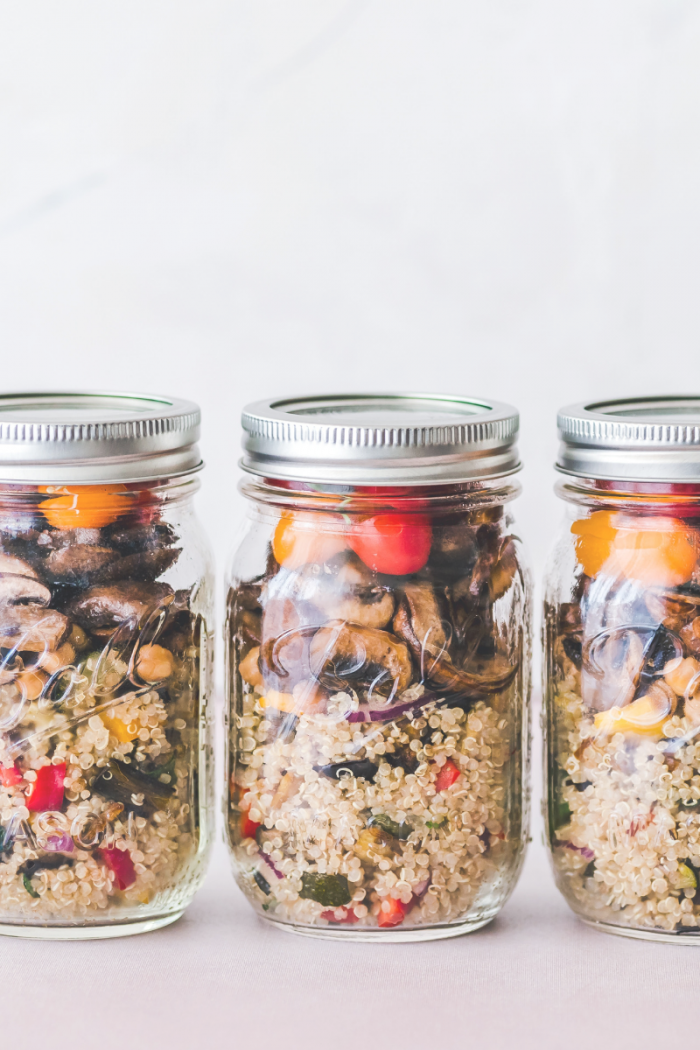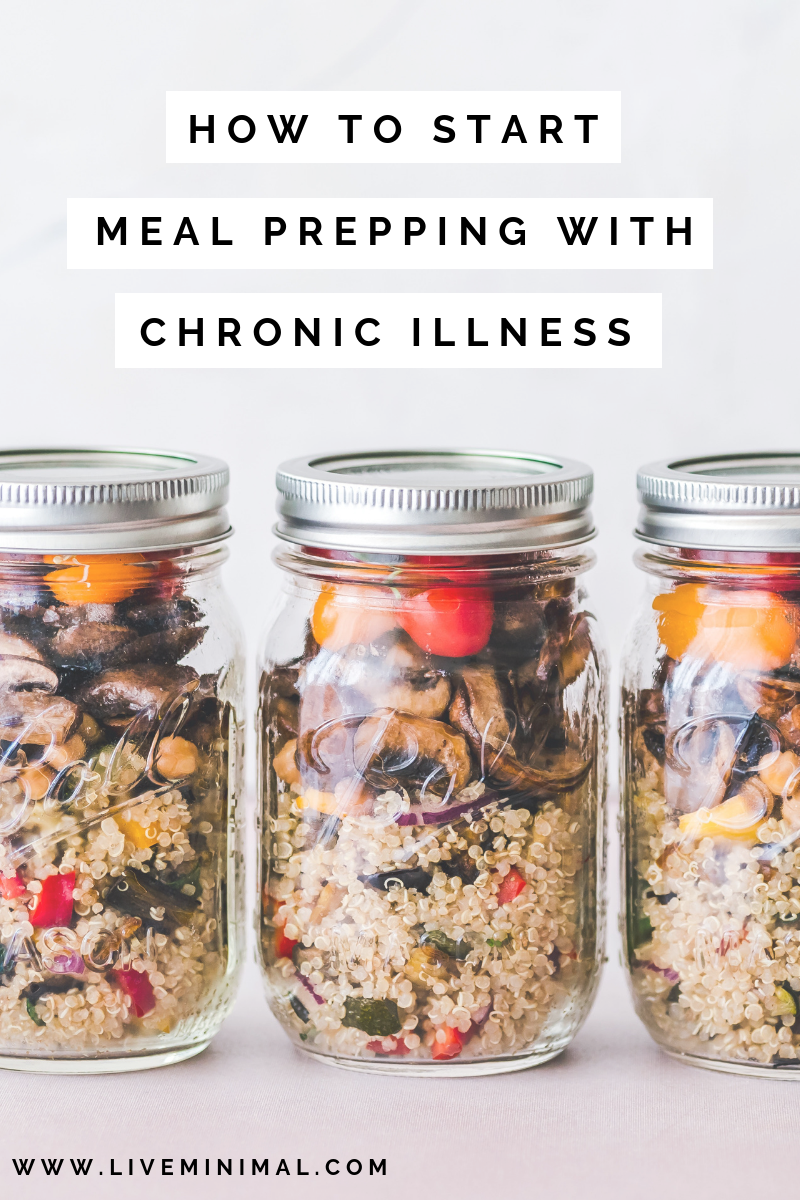I started meal prepping before I had chronic illness. It helped a lot when I was working full time and didn’t have the energy to cook when I returned home. Since being diagnosed, it’s helped even more.
Spending extra time in the kitchen seems daunting. Meal prepping can take a while to complete and there have been certain occasions where I’ve felt wiped out by the process. However, for me, the benefits have always outweighed the disadvantages.
Meal prepping can be beneficial when you have chronic illness for the following reasons –
- Energy saving.
Initially, meal prepping may seem overwhelming. There’s a lot of movement involved and energy spent standing for longer than normal. Yet long term, meal prepping will help you save energy because you’re not constantly in the kitchen. When you’re only in the kitchen every second day, you have more time to recover from daily activities – whether it be work, study or managing symptoms of a flare. - Reduces unnecessary snacking.
When I’m too exhausted to cook or experiencing a flare I have a habit of turning to snacks instead of making myself a proper meal. Prepping ensures you’re eating nutrient dense meals instead of snacking on oily or sugar-filled treats – which will only increase inflammation. - Helps you manage dietary requirements.
Meal prepping ensures you’re eating the right foods consistently and sticking to any dietary changes you’ve implemented. When I didn’t have anything prepped, I was eating whatever was in the pantry. Even if that meant eating foods containing gluten and soy which triggers inflammation in my body. It’s really easy to fall backward when there’s no plan in place. It also allows for portion control. I have an issue with bloating and digestion. If I eat a meal that is too heavy, within the hour my stomach expands and become sore. Prepping allows me to portion my larger meal into two or three smaller meals so that I’m not overeating.
Here are a few tips that will make meal prepping easier with chronic illness –
- Focus on meals with under 10 ingredients.
The fewer ingredients needing to be prepped, the better. Restrict the amount of peeling, can opening, and cutting. When cutting, try to cut two bits of produce at a time, rather than one. When I cut carrots, I line them up one above the other and use one knife to slice through them both at the same time. Stick to basic meals such as stews, soups, salads, and roasts. I try to avoid eating food from cans because of BPA. The day before meal prepping, I like to soak beans/chickpeas overnight – that way they’re available. - Start simple and work your way up.
Don’t get overwhelmed by the process. If you’re just starting, prepare meals only one day in advance. For example, on Sunday afternoon, prep your dinner and make extra for Monday so that you don’t need to cook until Tuesday lunch. Cook no more than two days in advance. Once you’ve mastered cooking for two days, move on to prepping breakfasts and snacks. - One pot/pan meals.
These are the easiest to prepare. By throwing everything into a slow cooker, into a pot to boil or into a pan to roast reduces time and energy expended. Meal prepping can get messy so one pot/pan meals don’t require a lot of clean up. - Take breaks.
Select meals that won’t have you on your feet for a long period of time. This will only lead to chronic pain over the next few days. If you choose to cook meals over the stove, have a stool nearby so that you can take breaks or sit down when peeling/cutting. - Mix & match foods.
My husband doesn’t like eating the same thing more than twice. If he eats a meal for Thursday dinner and Friday lunch, he doesn’t want to eat it again for at least a week. This can make prepping tricky. I try to mix and match foods that can be prepped at the same time but can be made into different meals. For example, I will make a larger amount of brown rice. I then take half of the rice and add black beans, guacamole, and salad to make burrito bowls. With the other half of the rice, I add chickpeas, broccoli, peas, and seasoning, to make curried fried rice. The same batch of rice – but made into two very different meals. These two meals are both under 10 ingredients, take less than 30 minutes to prepare, and can be eaten for lunch and dinner over the next two days.
When I prepare salads, I like to cut everything up and store it in a large container. I don’t add any dressing until right before I eat it. Dressing can be stored in a bottle in the fridge. Alternatively, mix in a small amount of flaxseed oil and lemon juice before serving. This will ensure your salads stay fresh and not soggy.
If you’re not sure where to start, a few meals that are great for prepping are –
-
- Anti-inflammatory soup
- Curried rice (if you have issues with nightshades, remove the capsicum and use chickpeas instead)
- Mediterranean quinoa salad
- Nomato minestrone soup
- Roasted vegetable & mushroom quiche
- Roasted sweet potatoes with hummus and salad
- Have a plan.
Sunday, Wednesday and Friday afternoons are my prepping days and I try to stick to that routine. It’s really important to allocate a set time each week for prep. Depending on the meals you’ve selected, the process may take between 30 minutes – 2 hours. For me, I work best in the middle of the afternoon. I try not to do it too early or too late in the day. Mornings or evenings may be best for you. Try prepping at different times to see which works best. Fitting this into your normal routine will make the process run smoother.
I hope these tips help! Meal prepping has made it easier for me to manage my energy levels, chronic pain, and dietary requirements.
What are your experiences with meal prepping? Do you have any tips you would like share? I’d love to hear them in the comments below!






One comment
Thank you for this I’ve been trying to figure out how to manage this scenario and I was just talking with my husband about it too. It helps tremendously!!